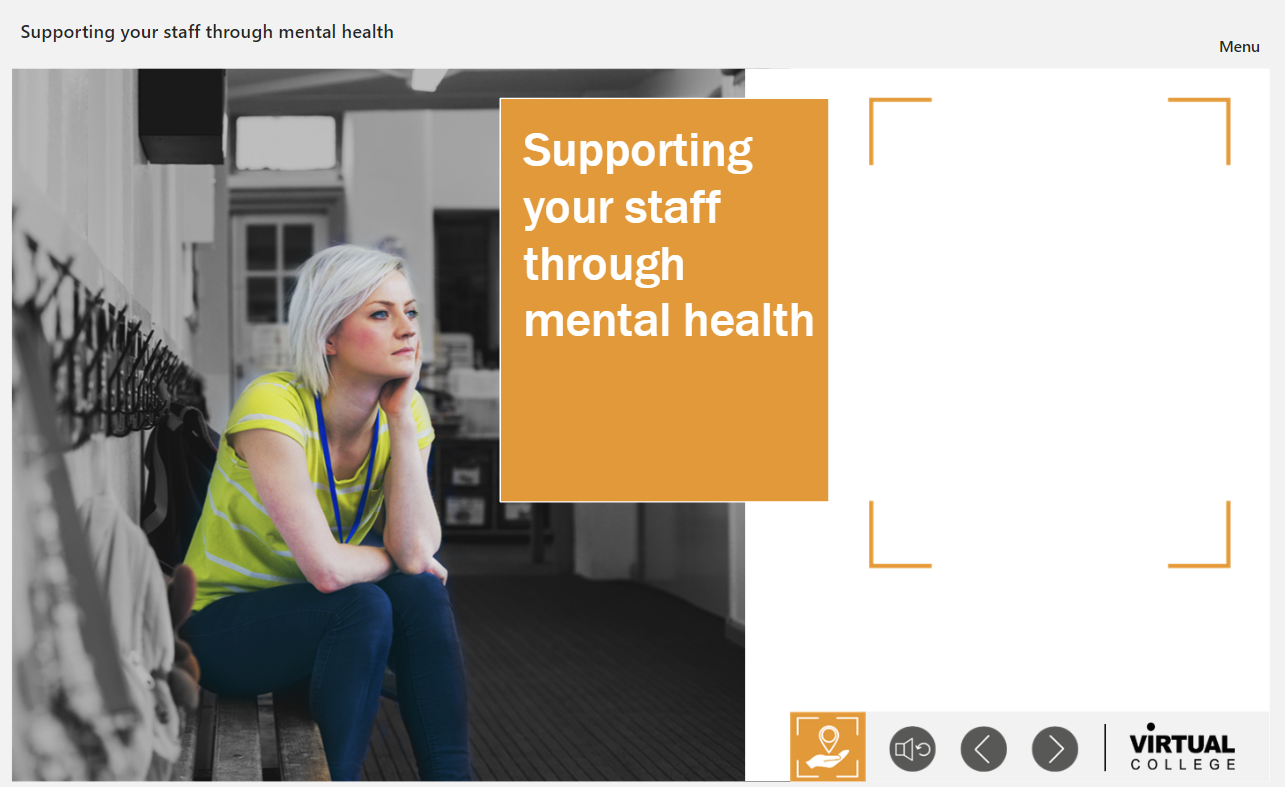How to fit mental health into your health and safety policy
The Health and Safety Executive (HSE) has recently updated their first-aid guidance to include, amongst other things, a section about mental health in the workplace. It calls out to workplaces to ‘consider ways to manage mental ill health in your workplace which are appropriate for your business’.
This inclusion represents a big leap toward acknowledging that mental health and physical health must be considered equally. It also emphasises the need for workplaces to consider people’s psychological needs when creating a safe workplace, as well as include mental health in their health and safety policy. So, why is this so important?
Consider these statistics:
- The HSE reported in 2021/22 that 822,000 workers suffered from work-related stress, depression or anxiety
- 26% of workers say they struggle to relax in their personal time because of work1
- Mental ill health costs employers approx. £56 billion each year1
- 52% of employees are experiencing symptoms of depression2
- 61% of employees experiencing depression are female2
- 33% of employees experiencing depression are aged 25-342
- Only 9% of employees are currently seeking mental health support2
As you can see, mental health is a significant issue in the workplace, yet is still a taboo. This needs to change.
Legally, organisations’ employees have to complete compliance training, many which are health and safety courses. Though mental health courses aren’t a legal requirement, many believe they should be, as it is important that employees are aware of the impact of poor mental health, what signs to look out for in themselves and colleagues and what they can do to help and support each other. Including this training will not only increase awareness but also help make conversations about mental health easier as it will help remove the stigma – a stigma which is still strong, as shown by the some of the stats above.
There are numerous reasons why mental health problems can develop at work. They could be due to circumstances at work, such as stress, deadlines, time management, bullying and poor management. Or there can be circumstances outside of work, such as bereavement, divorce, a new baby, financial issues, or loneliness, which can then spill over into work.
How can you help?
There are a number of ways in which you can help support mental health in the workplace.
Training and resources
A combination of training and resources will help increase mental health awareness throughout the company, as well as ensuring the development of confidence and skills required to approach and support someone. Not all employees will need the same level of training though. Some will only require a basic awareness course, but employees such as managers will also benefit from training in communication skills, which are vital when it comes to discussing mental health. These could include skills such as active listening, communication, dealing with conflict and having difficult conversations.
Occupational health
Occupational health focuses on both the physical and mental wellbeing of employees in the workplace and preventing work-related illness and injury. Occupational health professionals can work with organisations in different ways – large companies may have one that works in house, but smaller companies may employ an external provider. Depending on why they are required, they can call on specialists, such as physiotherapists, psychologists, ergonomic experts, or occupational therapists.
They are beneficial to organisations because they can provide an outside perspective and can help in many different areas. They can advise on different elements, such as:
- recommend reasonable adjustments to the workplace for employees who need it
- support health training and awareness within a company
- provide advice and counselling
Mental health first aiders
Companies are now training staff to be mental health first aiders or champions, with some companies having as many mental health first aiders as they do first aiders. There are training courses available which teach how to spot signs, how to offer help and guide a person towards support. They aren’t training people to be counsellors or therapists, but they do teach important skills such as how to listen, reassure and respond.
Making room for these roles will speak volumes about a company’s commitment to mental health and their devotion to breaking down those stigmas and providing people with support. They will not only increase employees’ confidence regarding what needs to be done to support a struggling colleague, but will also provide a safe space for employees to address any issues, where before they may have felt unable to discuss them.
Support initiatives
Where it is essential to start implementing the above initiatives, there are other smaller ones you can implement as well; these will also make a difference and help create an environment where staff feel supported and cared for. These could include:
- Encourage a healthier diet by providing free fruit
- Encourage exercise and breaks by arranging lunchtime walks or wellbeing classes, such as yoga or meditation
- Facilitate access to counselling
- Encourage work/life balance, such as flexible working time
- Provide an appropriate workplace setting. Open plan is common now, but it is important to create break out spaces, where people can retreat if they need a quiet place
- Hold events, where people can chat about mental health
- Bring in experts to discuss mental health
- Provide relevant guides and advice, such as how to manage stress, time management, and how to improve sleep.
If you would like to train your staff about mental health, our training courses will cover what you need.
Statistics sources:


